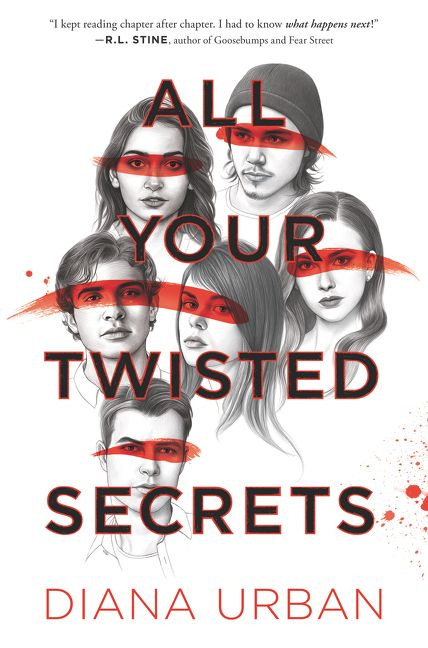How I Outlined All Your Twisted Secrets
Here's a behind-the-scenes look at how I outlined my young adult locked-room thriller, All Your Twisted Secrets.
I’ve always loved learning about how a book came to fruition. It’s fascinating to learn how my favorite stories were crafted, and how authors have such different processes. So today I’m giving you a behind-the-scenes look at how I outlined my upcoming young adult locked-room thriller, All Your Twisted Secrets!
I’m not going to lie — this book was a beast to write. And even though I started drafting before I had an outline, creating an outline was crucial to revising and polishing the story.
What made this book so tricky?
On the surface, the hook is easy to grasp: Six teens arrive at an invite-only dinner and find themselves trapped in a room with a syringe of poison, a bomb, and a note that if they don’t choose one person to kill within 60 minutes, they will all die.
It’s also is told from a single POV: Amber Prescott, a seventeen-year-old aspiring film score producer who’s locked in the room with the queen bee, the jock, the genius, the stoner, and the dorky wannabe.
Pretty straightforward, right? Breakfast Club meets a ticking bomb.
Hahahahaha. If only.
All Your Twisted Secrets is also a dual-timeline, deconstructed murder mystery, with real-time chapters alternating with flashback chapters dropping clues about whodunit… and who will die. And no spoilers, but let’s just say there’s a twist or two or five.
Why I needed an outline
I pantsed the first draft (meaning, I didn’t plot the book beforehand). The real-time chapters were easier in a way; I had a good sense for how the conversation in the room would devolve as time runs out and panic rises. But I wrote the flashback chapters as they came to me so I could get to know the characters.
There were two main problems with this strategy:
#1: When you’re pantsing a thriller, there are twists you think of later that make things you wrote in early chapters nonsensical. If I’d outlined from the get-go, I would have saved myself a ton of time. It’s much quicker to revise an outline than a 60,000-word first draft.
#2: The cliffhanger at the end of each real-time chapter needed to spill into the next flashback chapter, then the cliffhanger of that flashback chapter needed to feed into the next real-time chapter, and so on. Without outlining from the get-go, it was difficult to interconnect the real-time action with the flashback reveals.
So when it was time to revise and rewrite subsequent drafts, I had to get more organized.
My outlining strategy
I ended up using good ol’ fashioned index cards!
Each timeline was a different color: blue index cards for the real-time chapters, pink index cards for the flashback chapters. On each card, I noted two things: (1) the primary plot point that chapter would accomplish, and (2) the cliffhanger. Then I used different color flags for where I dropped specific clues or made reveals: yellow was one plot thread, orange was another, and so on.
This tactile approach helped me more than typing out an outline, or even creating note cards in Scrivener. When I needed to reorder scenes, literally moving them around helped me visualize where everything belonged, and understand how to interconnect the plot beats in each chapter. Once I finished reordering the index cards, I shuffled around the scenes in Scrivener, and dove into draft #2. And let’s be honest — draft #2 was essentially a first draft, since I rewrote almost the entire book. There are very few lines in the current version that survived from the very first draft.
Outlining going forward
From this process, I’ve learned that from now on I want to outline my thrillers before I start drafting. I always start with the notecards, and then transcribe them into a Word doc, where I can flesh out each chapter with more plot points, character arc beats, and other ideas.
When I flesh out the outline, I don’t go in order — as character motivation / development ideas pop into my head, I’ll comb through the outline and insert details where they seem to best fit. I’ll do that over and over as ideas come to me, getting to know the characters through this process.
I hope this was interesting to see! Let me know if you have any questions about my process. I might turn the answer into my next email or blog post.
And if you want to read All Your Twisted Secrets, you can get it here:




